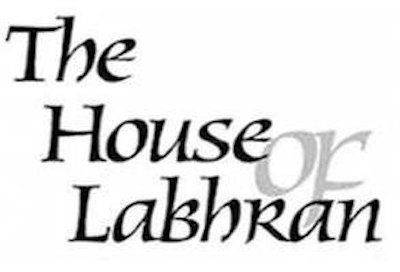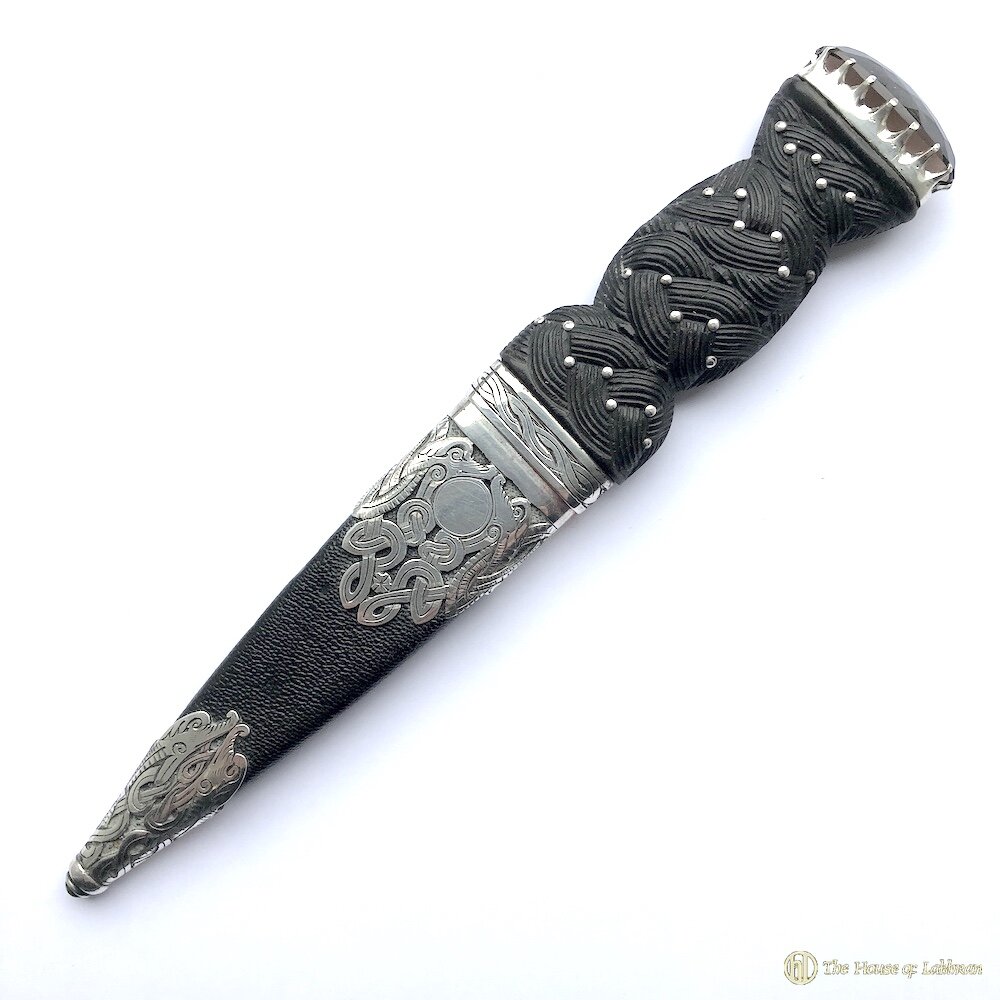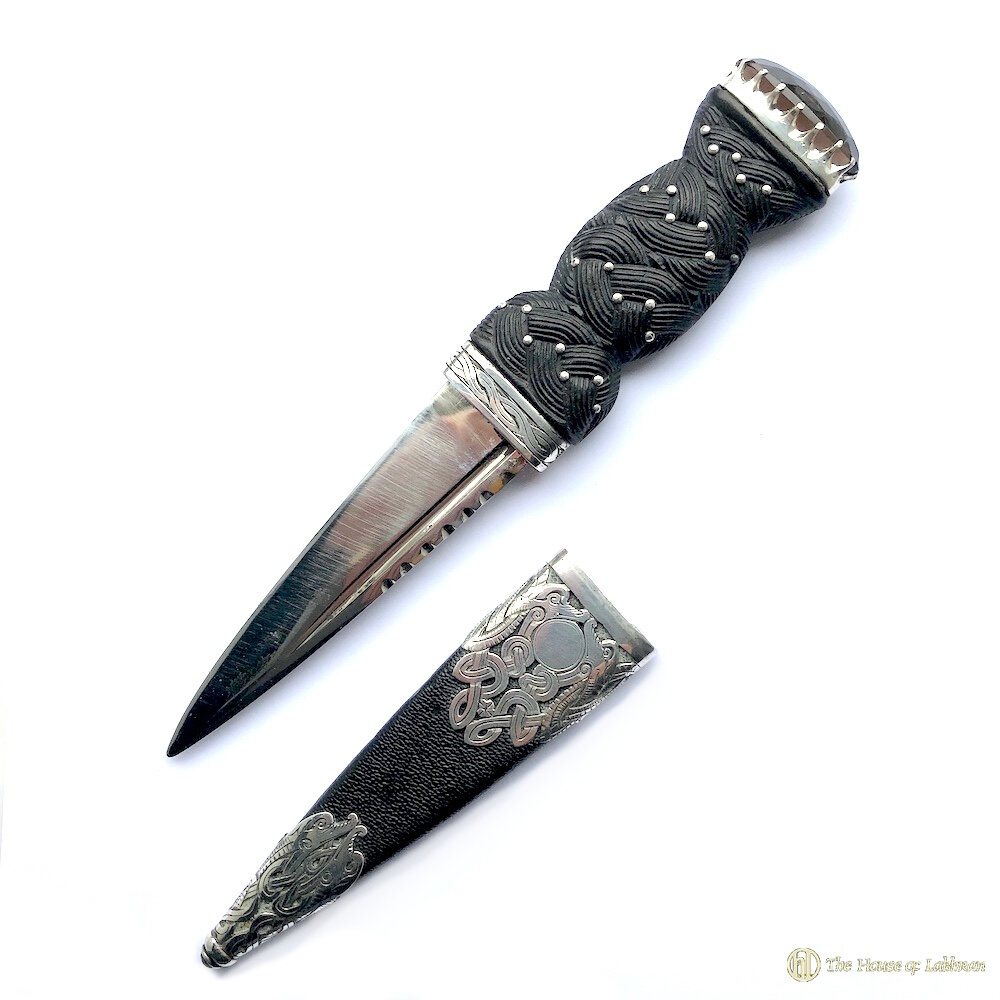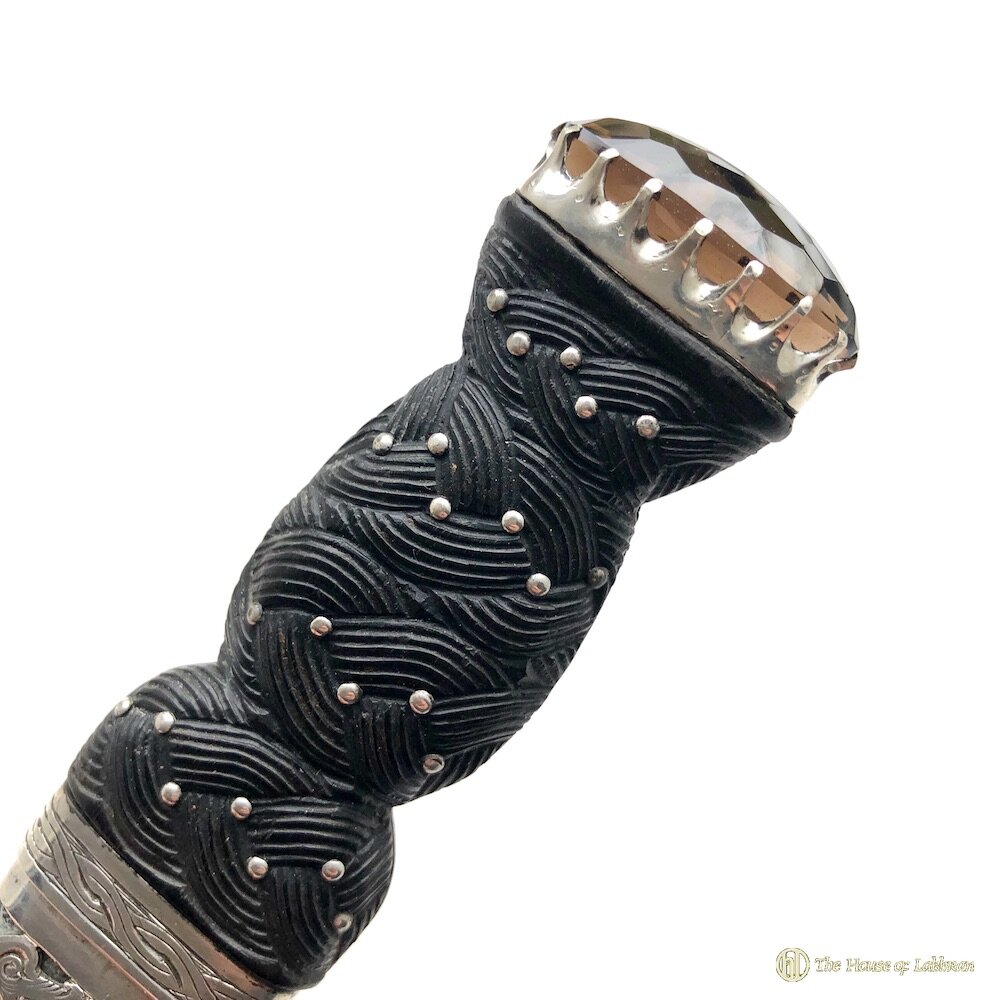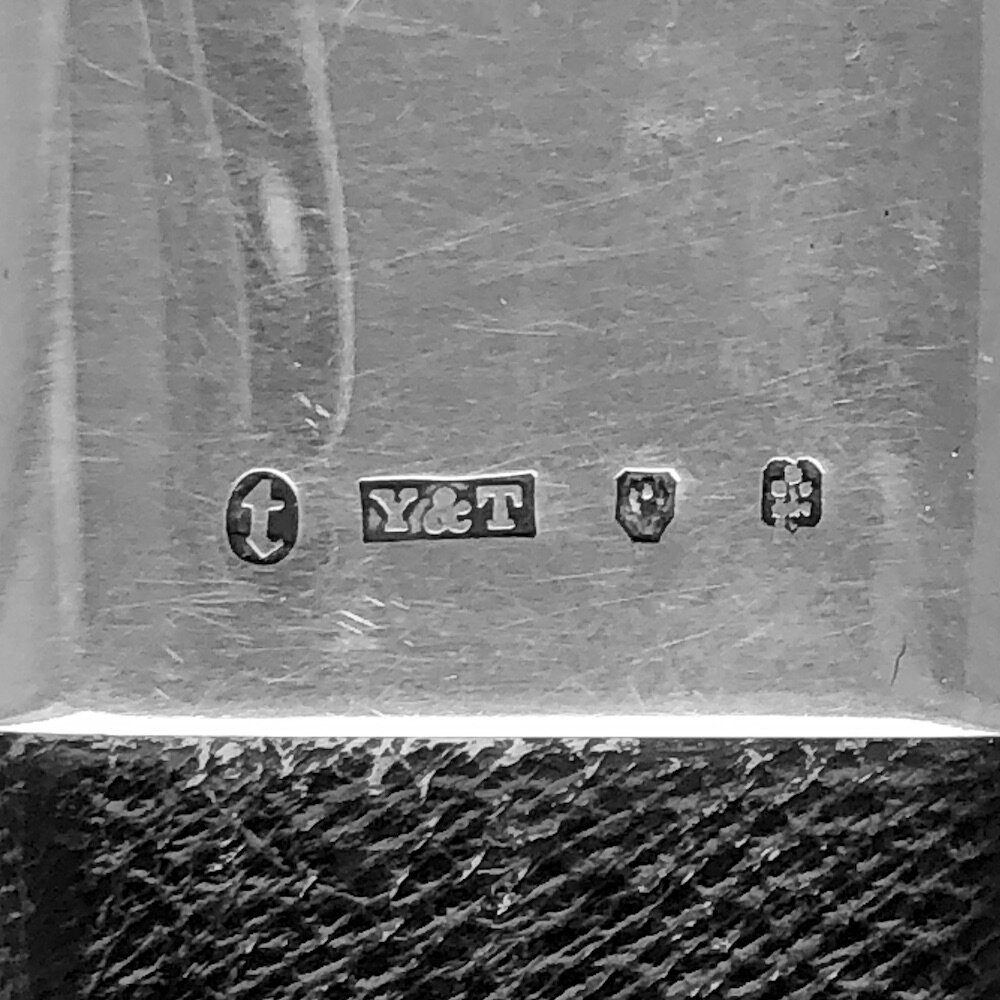Antique Victorian 1900 Sgian Dubh by Walter Young & Henry Tatton, Edinburgh
Antique Victorian 1900 Sgian Dubh by Walter Young & Henry Tatton, Edinburgh
Antique Victorian 1900 Sgian Dubh - Young & Tatton, Edinburgh
A Victorian Scottish Silver Mounted sgian dubh. Made in 1900 by Young & Tatton of Edinburgh. The mounts feature a zoomorphic design and celtic knot design. The hilt is carved blackwood with silver studs a claw style raised set stone set hilt. The blade has some minor blemishes as with most antique sgian dubhs . Total sgian dubh length approx. 19cm
The Young & Tatton silversmiths supplied silver Highland dress accessories and sporran cantles to clients at the turn of the century including William Anderson & Sons, George Street Edinburgh - Highland Dress Retailers.
Young & Tatton Silversmiths
Henry Tatton and his brother-in-law Walter Young formed the silversmith partnership Young & Tatton and registered it in 1892. The partnership lasted from 1892 to 1905 and had workshops at 30 Rose Street, Edinburgh. The Day Books at the Assay Office continued to write “Young & Tatton” until 25 August 1909. It also appears they would use the Y&T stamp until this later date.
After 1909 the replacement mark ( H.T for Henry Tatton ) was introduced. Henry Tatton continued to work from his Rose Street workshop. In 1910 Henry Tatton took over the business of the renowned Scottish jeweller, John Maitland Talbot. Talbot was registered at the Glasgow and Edinburgh Assay Offices. He led a workshop for the Lynedoch School of Artistic Handicraft in Edinburgh in the early 1890's.
The firm became Henry Tatton & Son circa 1925. Henry Tatton & Son incorporated Henry Tatton and Edward Roy Tatton into Henry Tatton & Co. circa 1930.
In the 1936 Henry Tatton Ltd created a 3000 piece banqueting service for Royal Dining Room, Palace of Holyroodhouse. The set was engraved with the Scottish coat of arms and motto. Hallmark for Edinburgh 1935-6, with the maker's mark of Henry Tatton & Co., Edinburgh. It now forms part of the Royal collection.
